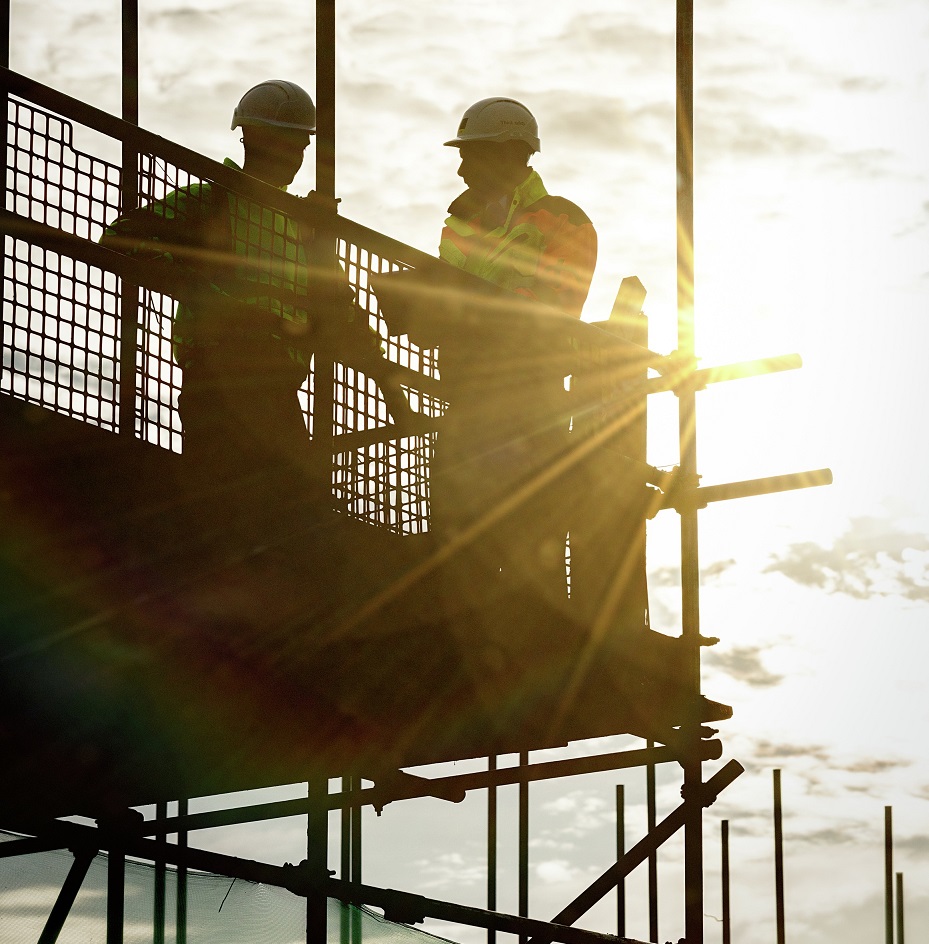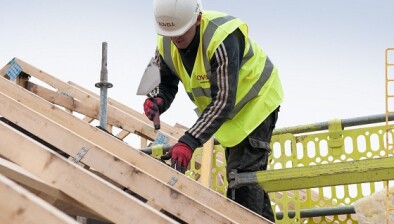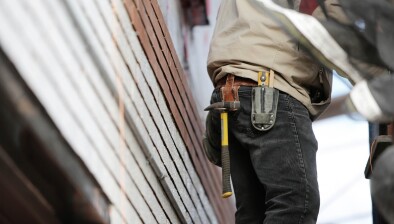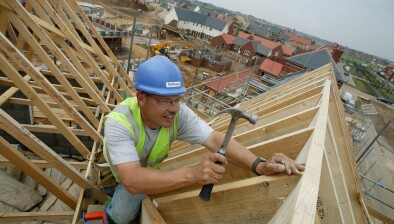Construction output rises slightly in August

UK construction companies recorded a marginal increase in total business activity during August with growth in the commercial and civil engineering segments helping to offset a slump in house building.
However, business activity forecasts for the year ahead were the weakest since January and job creation lost momentum since the previous month. This was largely due to falling
sales volumes across the construction sector, as signalled by the fastest decline in new orders for just over three years.
At 50.8 in August, down from 51.7 in July, the headline S&P Global / CIPS UK Construction Purchasing Managers’ Index (PMI) – a seasonally adjusted index tracking changes in total industry activity – signalled only a slight increase in overall construction output.
There were divergent trends across the three main categories of construction activity monitored by the survey in August. Commercial building continued to expand at a robust pace (index at 54.2), with the rate of growth holding close to July’s five-month high. Civil engineering activity (52.4) also increased, but the speed of growth slipped to its lowest since April.
House building remained the weakest-performing part of the construction sector (40.7), with the downturn the second-fastest since May 2020. Survey respondents widely commented on subdued market conditions and a headwind to activity from cutbacks to new build projects.
August data signalled a decline in total new order volumes for the second time in the past three months, which contrasted with solid growth in the spring. Although only modest, the downturn in order books was the steepest since May 2020. Construction companies noted that rising interest rates and concerns about the near-term economic outlook had led to more cautious spending among clients, especially in the residential building segment.
Employment numbers increased for the seventh month running, but the rate of growth weakened since July and was only modest. The upturn in sub-contractor usage also softened in August, which contributed to the sharpest rise in availability since January 2010.
Suppliers’ delivery times for construction products and materials meanwhile improved at a robust pace. The respective index eased slightly since the previous month, but was still the second-highest since April 2009. Survey respondents widely commented on improved stock availability and fewer pressures on supplier capacity.
An improved balance between demand and supply helped to stabilise overall input costs across the construction sector. Latest data signalled only a marginal rise in purchasing prices and the rate of inflation eased since July. A number of firms cited more competitive market conditions and successful price negotiations with suppliers to account for falling raw material costs.
August data indicated that construction companies are relatively cautious about the outlook for business activity during the next 12 months. The degree of positive sentiment slipped to its lowest since January, with concerns about the impact of rising borrowing costs and subdued housing market conditions often cited during the latest survey period.
Tim Moore, economics director at S&P Global Market Intelligence, which compiles the survey, said: “UK construction companies experienced another slump in house building activity during August as rising interest rates and subdued market conditions resulted in cutbacks to client demand and new build projects in particular. Aside from the pandemic, the recent downturn in residential work has been the steepest since spring 2009.
“Resilient demand for commercial work and infrastructure projects are helping to keep the construction sector in expansion mode for now, but the survey’s forward-looking indicators worsened in August. Total new orders decreased at the fastest pace for more than three years amid worries about the broader economic outlook and the impact of elevated borrowing costs. Rising risk aversion also meant that construction firms pared back their own output growth projections, with business activity expectations slipping to the weakest since January.
“August data pointed to a welcome stabilisation of costs across the construction sector and another sharp improvement in suppliers’ delivery times. Adding to signs of fewer capacity pressures, the latest survey revealed the sharpest rise in subcontractor availability for more than 13 years.”
Dr John Glen, chief economist at the Chartered Institute of Procurement & Supply (CIPS), said: “Though the construction sector overall showed an improvement in August, several imbalances in the figures give cause for concern.
“Residential building took another knock further into contraction as new housing starts weakened. The cost of living crisis continued to squeeze household finances and buyers were reluctant to commit in the shadow of potentially another interest rate in September. Housing activity fell at its second sharpest level since 2009, excluding the pandemic years, and overall new orders dropped at the fastest rate since May 2020. The sector was propped up overall by some improvements in commercial activity such as office refurbishments.
“This below par performance had a knock-on effect on job creation which was starting to lose momentum. The right skills remained in short supply and without pipelines of new work coming through, recruitment levels were reduced.
“One bright spot in August’s figures was the second biggest improvement in supplier delivery times for 14 years as constraints on raw materials eased and supply chain performance improved.”
The Federation of Master Builders (FMB) said the data once again shows that not enough is being done to tackle the alarming fall in the rate of house building in the UK.
FMB chief executive Brian Berry said: “While it will come as welcome news to many in the construction industry that the sector saw growth in other areas, the continued steep downturn in housebuilding rates remains a major concern. Having taken the decision to only have 300,000 homes as an ambition not a target, the Government needs to set out a clear plan for house building to demonstrate that it is committed to substantially increasing housing supply.
“The sad fact is that the housing market in this country is in crisis and has been for a long time. The lack of a visible government plan to address this is deeply concerning, and creates a lack of certainty, both for those people desperately looking to access the housing market, and for local housebuilders looking to deliver the high-quality housing that their local communities need.”
James Bailey, director and UK housing leader at PwC UK, added: “Despite expansions in both civil engineering and commercial work, we see the continued impact of strained market conditions in the housing sector, which posted an index of 40.7 - the second-fastest downturn since May 2020, which was largely due to reduced activity caused by the pandemic.
“High interest rates and difficult buying conditions will have inevitably contributed to the decline in total new order volumes cross-sector for the second time in the past three months. As the PMI notes, the residential building segment is battling with concerns about the near-term economic outlook, which is consequently leading to more caution being exercised in investment. In real terms, this will see the continued slowing of projects and the pace and scale of house building being reined in, until developers can place more faith in the wider economic operating environment.
“Proposed reforms in relation to nutrient neutrality should ease some supply-side constraints, but it will take some time to see their impact come through in numbers. Housing is likely to be a key focus during party conference season, gathering momentum in the build-up to a general election next year.”
















